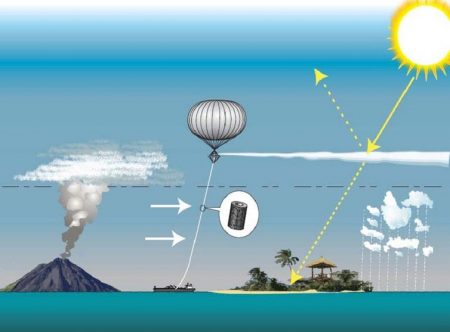December 17, 2018 – The report that the Americans, Russians, Saudis, and Kuwaitis didn’t want to accept at COP24 described the consequences of not getting to a net-zero emissions state by mid-century indicating that it would mean global mean temperatures would approach a rise of 3.0 Celsius (5.4 Fahrenheit) by 2100. Described as the IPCC Special Report on Global Warming of 1.5 Degrees Celsius, it is one of three special studies which will be published as a follow-up to the Paris Climate Agreement of 2015. Drawing on the findings of more than 6,000 published articles and papers, the study describes the world in a 1.5 Celsius scenario looking at the impact on the natural and human systems of our planet. It then discusses mitigation strategies to keep the rise to no more than 1.5 Celsius, looking at socioeconomic and technological fixes. Throughout the report, it provides insights into possible pathways to keep mean temperatures from rising above the 1.5 Celsius target. Prepared by 74 leading climate science experts nominated by 541 of their peers, 133 contributing authors and 796 expert reviewers from 65 different countries, the unwillingness of the United States and its fossil fuel collaborators to acknowledge the report as valid science spoke volumes in Katowice, Poland.
The Americans under Donald Trump have announced that they are withdrawing from the Paris Climate Agreement. So why were they at Katowice doing PowerPoint presentations about the efficacy of coal-fired power and endorsing a future with “clean coal?”
There can only be one reason why the American federal government is opposed to addressing climate change. Those in the cabinet and the West Wing of the White House are beholding to the fossil fuel industry and its continued desire to render profit from its existing on the book assets rather than see them stranded by regulation or market mechanisms like an emissions tax and cap-and-trade.
But you would think that the industry would look at the Special Report and see a straw to grasp in some of its discussion related to mitigation pathways. To make everybody in the fossil fuel industry happy, a perfect scenario would be one in which they would continue to produce their products which the people of the planet would use for transportation, plastic, medicines, agriculture, energy production, and a thousand other uses, while the carbon pollution from the product would be removed to yield a net-zero result. But it is clear that those in the industry want no restrictions on their future and have found willing accomplices in the United States, Russia, Saudi Arabia, and Kuwait.
Too bad they can’t read because if they had allowed the tabling of the Special Report at COP24 they would have found in its pages pathways to limit global warming through the removal of CO2 and other greenhouse gases through carbon capture and sequestration (CCS) as well as carbon capture and utilization (CCUS) in the discussion of system transitions. Considering that the fossil fuel industry is already vested in CCS and CCUS technology the economic opportunity to grow this side of their businesses would seem worth doing.
More troubling in the Special Report is a reference to geoengineering, specifically solar radiation modification (SRM). Although the Report describes SRM in theoretical terms, even the mentioning of it in a document focused on dealing with anthropogenic climate change caused by growing carbon emissions seems inappropriate. It is as if this is seen as a resort of last use should emissions continue to rise. Putting sun blockers in the high atmosphere, or mirrored satellites in orbit to deflect the energy of the sun would do nothing to reverse carbon-associated ocean acidification.
So it appears that CCS, CCUS, and geoengineering, all technological fixes that could be worth trillions of dollars to those who develop them, didn’t really make an impact on the delegates at Katowice. I would have thought that the fossil fuel companies’ and American federal leadership would have seen the immediate PR value of presenting these fixes rather than a lame presentation spouting the benefits of coal-fired power plants.
















